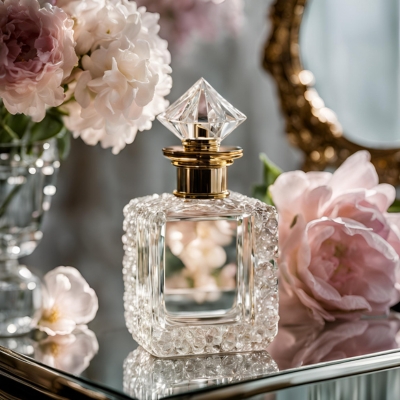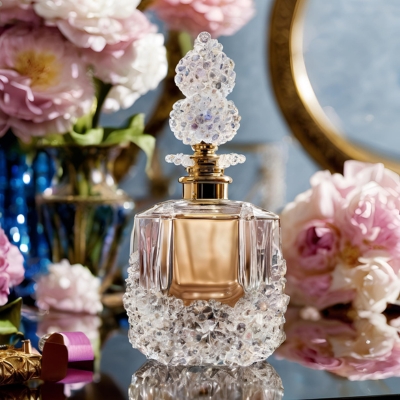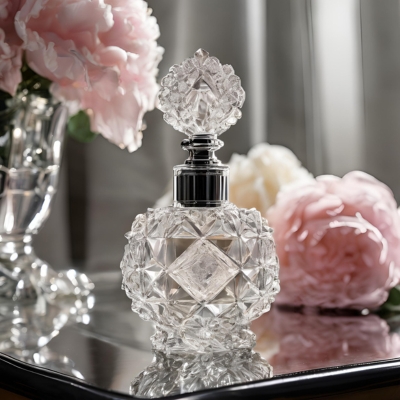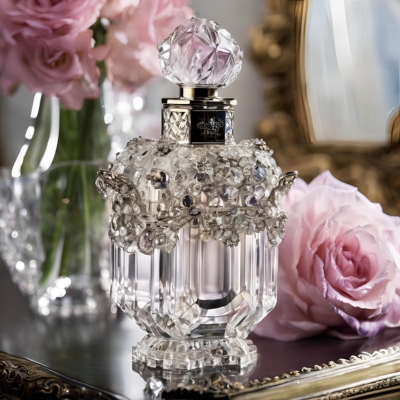Mastering Perfume Layering: How to Create Unique Scent Profiles
Did you know that the fragrance industry is projected to exceed $80 billion by 2025? While most people might stick to a signature scent, mastering perfume layering opens a world of creative possibilities that could revolutionize how you experience fragrances.
Imagine stepping into a vibrant garden during spring, where the air is filled with the harmonious blend of blooming flowers. One day, you choose a light rose scent, and the next, you feel adventurous and select a rich sandalwood. What if you could combine these experiences into unique scent profiles that reflect your emotions and surroundings? This journey of exploring personalized scents is not only enjoyable but also deeply rewarding. In this article, you'll learn the art and science behind perfume layering, empowering you to craft your very own olfactory signature.

Understanding the Art of Perfume Layering
Delving into the realm of understanding perfume art involves recognizing how scent can serve as a powerful medium for personal expression. Throughout history, various cultures have embraced the concept of fragrance artistry, often using signature scents to convey individuality and mood.
Engaging in perfume layering techniques opens avenues for creativity. The practice allows you to combine different fragrance notes, crafting a unique scent profile that resonates with your personality. This process is more than mere application; it is an exploration of scent as an extension of oneself.
To effectively layer perfumes, consider the foundational elements of your chosen fragrances. Understanding the components—top, middle, and base notes—helps create harmonious blends. Consider your preferences and the emotions you wish to evoke when selecting scents.
Experimenting with layering not only enhances your fragrance collection but also enriches your appreciation for fragrance artistry. Each unique combination offers a new experience, allowing you to express different facets of your identity and mood.
Ultimately, mastering the art of perfume layering can transform your relationship with scents, turning each application into an opportunity for creativity and personal storytelling.
Mastering Perfume Layering: How to Create Unique Scent Profiles
Exploring the nuances of scent composition is crucial for anyone passionate about perfume layering. Understanding how different notes interact can significantly enhance your ability to craft unique scent profiles. In this section, you will delve into the essential elements that comprise fragrances, providing a solid foundation for mastering the art of layering.
Overview of Scent Composition
Scent composition revolves around the concept of perfume notes. A fragrance is typically structured in three major layers: top notes, middle notes, and base notes. Each layer plays a fundamental role in how the fragrance unfolds over time:
- Top Notes: These are the initial scents you perceive after application. They are often light and volatile.
- Middle Notes: Also known as heart notes, these emerge after the top notes dissipate. They form the core of the fragrance.
- Base Notes: These provide depth and longevity, becoming noticeable once the middle notes fade.
The Science Behind Layering
Understanding fragrance layering science involves knowledge of the chemical properties of aromas. Each scent note has its own molecular structure, influencing how they blend together. For instance, some notes may enhance others while some might clash, leading to a less harmonious aroma. By mastering the interactions between different perfume notes, you can effectively layer scents to create complex and appealing profiles.
By grasping scent composition and the intricacies of layering, you empower yourself to explore endless possibilities in fragrance. Whether you aim for a light, fresh scent or a deep, musky profile, knowledge of these fundamental aspects will guide your creativity.

Essential Perfume Layering Techniques
Mastering the art of perfume layering requires knowledge of specific techniques to elevate your fragrance game. Two critical elements to focus on are the selection of base notes and the identification of complementary scents. Both play a significant role in crafting balanced and unique fragrance profiles.
Choosing the Right Base Notes
Base notes form the foundation of your fragrance and are key to anchoring your scent. For an effective base notes selection, opt for richer, more intense aromas such as sandalwood, amber, or vanilla. These scents not only provide staying power but also round out the overall composition of your fragrance. When selecting base notes, consider how they interact with the other layers of your scent to ensure a cohesive profile.
How to Select Complementary Scents
Finding complementary scents can greatly enhance your layering experience. Start by exploring fragrances that share similar characteristics, such as floral notes with other floral scents or citrus notes that can brighten deeper fragrances. Utilize the following strategies for successful scent combinations:
- Identify scents with shared undertones.
- Experiment with layering in small doses.
- Trust your instincts and personal preferences.
By applying these essential layering techniques, you can create harmonious and personalized fragrance experiences that reflect your unique style.
Creative Scent Mixing Tips
Exploring the world of fragrance allows you to create personalized scent profiles that reflect your unique personality. Understanding the nuances of different scent families opens up a realm of possibilities. Here are some creative scent mixing tips to elevate your layering game.
Mixing Floral with Woody Notes
Combining floral and woody notes creates an intriguing balance. Floral scents add a hint of brightness, while woody notes lend a grounding quality. Key floral options include jasmine and peony, paired effectively with sandalwood or cedarwood. Aim for a harmonious blend where no note overwhelms the other. A suggested ratio could be a 2:1 ratio of floral to woody, ensuring that both elements shine.
The Role of Citrus in Layering
Citrus fragrances play a refreshing role in scent layering. Incorporating citrus elements such as lemon or bergamot can enhance and invigorate any blend. Their versatility allows them to pair well with both florals and woods. When experimenting, try a citrus layering role of 1 part citrus to 3 parts of your chosen floral or woody scent to maintain balance.
Combining Spicy and Sweet Fragrances
Creating a blend of spicy sweet combinations can produce a captivating fragrance that intrigues the senses. For example, consider mixing vanilla's sweetness with the warmth of cinnamon. This combination provides depth and complexity, making it perfect for both daytime and evening wear. A balanced mixture could utilize equal parts of sweet and spicy elements, allowing each note to complement the other.
Crafting Unique Fragrance Profiles
Creating your own fragrance can be a deeply personal journey, allowing you to express your individuality through scent. Personalizing your scent not only reflects your taste but also conveys your mood and energy. As you embark on crafting unique fragrances, consider the ingredients that resonate with you and enhance your lifestyle.
Personalizing Your Signature Scent
Your signature scent should represent your essence. Think about the notes you love and the memories they evoke. You can choose from an array of fragrances to tailor a scent that aligns perfectly with your personality. Experiment with combining various notes to achieve a distinctive aroma that feels unmistakably yours. For true personalization, focus on these elements:
- Identify your favorite fragrance families: Are you drawn to florals, spices, or woody scents?
- Consider your daily activities: Determine which notes suit your lifestyle best, whether bold for a vibrant day or soft for a relaxed evening.
- Incorporate seasonal elements: Reflect on how scents can shift with the seasons to keep your signature scent fresh and relevant.
Inspiration from Nature and Seasons
Nature provides an endless reservoir of inspiration when crafting your own perfumes. Nature-inspired perfumes draw from the bounty of the earth's flora and fauna, creating scents that can lift your spirits or ground you. Embrace the changing seasons for fresh ideas; for example:
- Spring: Bright florals and green notes can reflect rebirth and renewal.
- Summer: Citrus and oceanic fragrances evoke warmth and adventure.
- Fall: Rich spices and earthy aromas promote comfort and reflection.
- Winter: Warm and cozy scents, perhaps with hints of resin or wood, offer a sense of serenity.
As you weave these elements into your fragrance creation, embrace the process of discovery that comes from exploring natural inspirations. This journey of crafting unique fragrances can lead you toward a personalized scent that stands as an extension of who you are.

A Comprehensive Perfume Layering Guide
Exploring the world of perfume layering can be exciting. Understanding how to effectively mix fragrances enhances your experience, leading to a unique scent profile. This comprehensive layering guide walks you through a structured approach, emphasizing essential techniques and key considerations.
Step-by-Step Guide to Layering
To begin your journey into step-by-step perfume layering, follow these essential phases:
- Choose your base: Start with a solid base note as the foundation of your fragrance.
- Add middle notes: Build complexity by incorporating middle notes that complement your base.
- Finish with top notes: These should be light and uplifting to create a balanced scent profile.
- Test your creation: Apply your layered fragrance on your skin to see how the scents interact throughout the day.
- Adjust as necessary: Don’t hesitate to make changes based on your personal preference or desired outcome.
Common Mistakes to Avoid in Scent Mixing
Avoiding common scent mixing mistakes can be crucial to your success. Look out for the following:
- Over-layering fragrances can lead to overwhelming scents instead of a harmonious blend.
- Neglecting basic scent families often results in clashing fragrances.
- Ignoring skin chemistry can drastically alter how the scents smell after application.
- Failing to allow a fragrance to develop may prevent you from experiencing its full potential.
- Being impatient while experimenting can lead to rushed decisions before understanding your preferences.
By consulting this guide, you set the stage for discovering a rewarding exploration in perfume layering, avoiding pitfalls along the way.
DIY Scent Blending: A Step Towards Customization
Embarking on your journey of DIY scent blending unlocks a world of creativity and personalization in fragrance creation. To get started, you need to focus on fragrance ingredient gathering, ensuring you have quality materials that will elevate your custom blends.
Gathering Ingredients for DIY Blends
Successful scent blending hinges on the ingredients you select. Begin by considering:
- Essential Oils: Look for high-quality essential oils that match your desired fragrance profile.
- Alcohol Bases: Opt for either high-proof vodka or perfumer's alcohol as a base for your blends. These options provide a neutral backdrop that preserves the scent.
- Fixatives: Incorporate natural fixatives such as benzoin or myrrh to help sustain the longevity of your fragrance.
Sourcing these ingredients from reputable suppliers ensures that your final product meets your expectations in aroma and performance.
Tools You Need for Effective Blending
Utilizing the right scent blending tools is essential for achieving precise and delightful results. Gather the following:
- Dropper Pipettes: These are ideal for measuring essential oils accurately without contamination.
- Glass Mixing Bottles: Use these for combining your ingredients, as glass prevents chemical reactions that might occur with plastics.
- Scale: A precise scale helps you measure ingredients accurately, ensuring consistency in your blends.
- Fragrance Tester Strips: These strips allow you to sample your blends before finalizing your fragrance, helping you make adjustments as needed.
With the right tools and quality ingredients, your DIY scent blending journey will transform your creative visions into customized fragrances you can truly call your own.

Fragrance Combination Ideas to Try
Experimenting with different fragrance combination ideas can open up a world of possibilities in perfume layering. Whether you are just starting out or you have some experience under your belt, there are countless ways to create a unique scent profile tailored to your preferences. Below are some options that cater to both beginners and advanced users.
Popular Layering Combinations for Beginners
If you are new to fragrance layering, start with these popular beginner combinations that are easy to mix and create delightful blends:
- Citrus and Floral: A bright grapefruit with a soft jasmine can result in a refreshing yet delicate scent.
- Woody with Vanilla: Combining cedarwood with vanilla creates a warm, inviting aroma perfect for everyday wear.
- Green Tea and Mint: This light combination offers an uplifting, rejuvenating scent that's great for daytime.
- Spicy and Fresh: Mixing a hint of cinnamon with fresh lemon provides warmth balanced with zest.
Advanced Combinations for Experienced Users
For those with experience in fragrance layering, try these advanced layering suggestions that challenge traditional blending techniques:
- Oud and Rose: A classic combination that results in a rich, luxurious scent that exudes elegance.
- Patchouli and Bergamot: A deep earthy note paired with a vibrant citrus offers depth and complexity.
- Amber with Leather: This bold mix carries a sensual and sophisticated scent profile ideal for evening wear.
- Incense and Green Notes: The addition of incense with fresh herbs creates a dynamic, intriguing aroma.
It is clear that the craft of creating unique scent profiles offers limitless possibilities for personal expression. By understanding the fundamentals of scent composition and applying essential layering techniques, you can tailor fragrances to mirror your individuality. Embracing this multifaceted approach not only enhances your olfactory experience but allows you to transform everyday moments into something truly memorable.
A unique scent profile recap emphasizes the importance of experimentation in your fragrance journey. From carefully selecting base notes to mixing complementary scents, each step is an opportunity to reflect on your personal tastes. Don’t hesitate to draw inspiration from the world around you—nature, your favorite memories, and even the changing seasons can guide your creative process.
Ultimately, mastering perfume layering is about unlocking your potential to create fragrances that resonate with who you are. The art of scent blending invites you to explore, learn, and refine your preferences, making each scent combination a unique expression of your identity. Enjoy the journey ahead as you dive deeper into the captivating world of fragrances.
Related Articles
The Captivating History of PerfumesHow to Choose the Perfect Perfume
Understanding Fragrance Families
Top Luxury Perfume Brands
Fragrances for Weddings and Special Occasions
Shop Perfumes on Amazon
